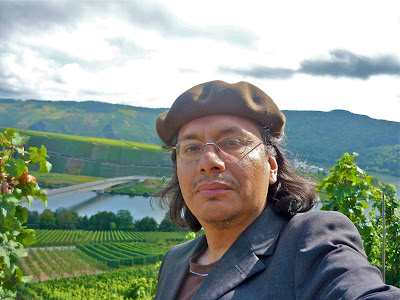
Traveling is a philosophy, a way of life. Living in other cultures has given me values no university in the world could have taught me. The willingness to walk the extra mile, to seek out valuable people, to sit down and actually listen to people's stories can create magic. Every single individual has a personal story to tell. I recently spent an entire day harvesting grapes in one of the world's steepest vineyard alongside Polish seasonal workers on the Moselle river. It was a delightful day that granted me insight into the daily toils of these benevolent migrant workers. Vintner Gernot Hain patiently explained the work to be done that day and entrusted me with specific instructions for the harvesting of a special selection of fermented grapes during the 2009 wine harvest. What does that have to do with the image above? Nothing. It simply depicts a beautiful road to be taken. I shot this photo in the Saarland just a few miles before crossing the border into Lorraine (France) that proved to be no border at all. It was a wonderful country road that took me through the southwesternmost region of the Hunsrück highlands and revealed to me landscapes I had not yet discovered. I invite you to view the photos that follow and to travel, to learn a new language and make new friends.















